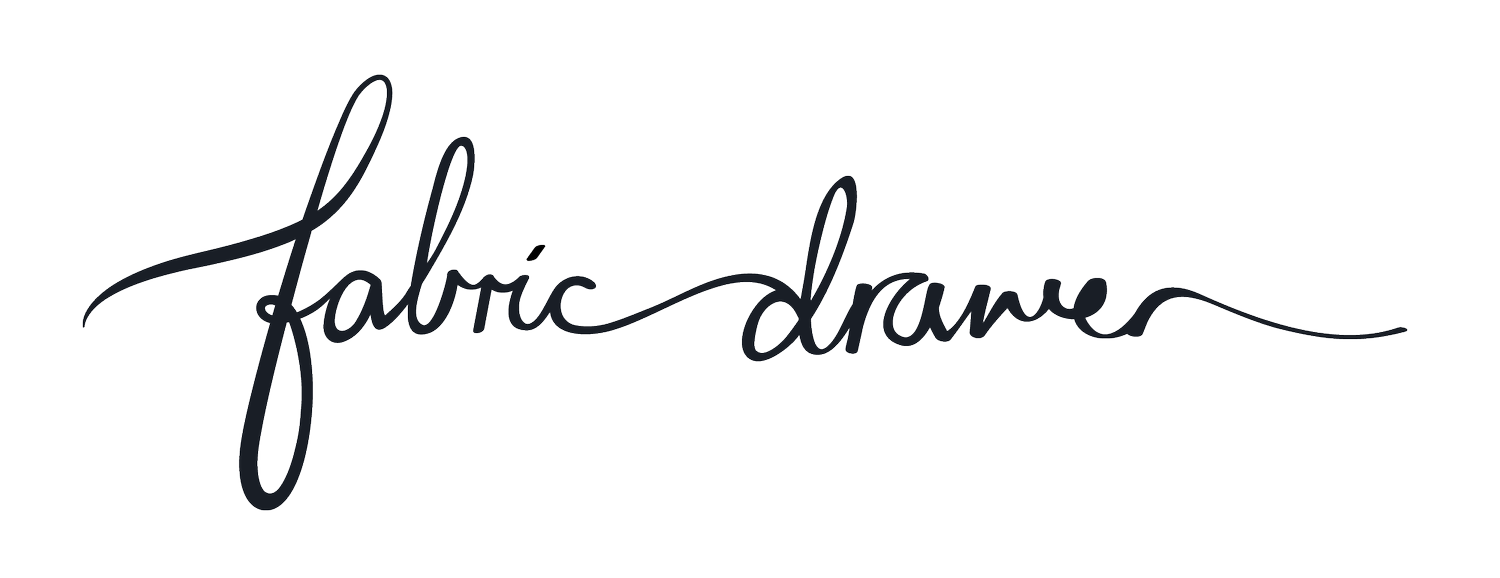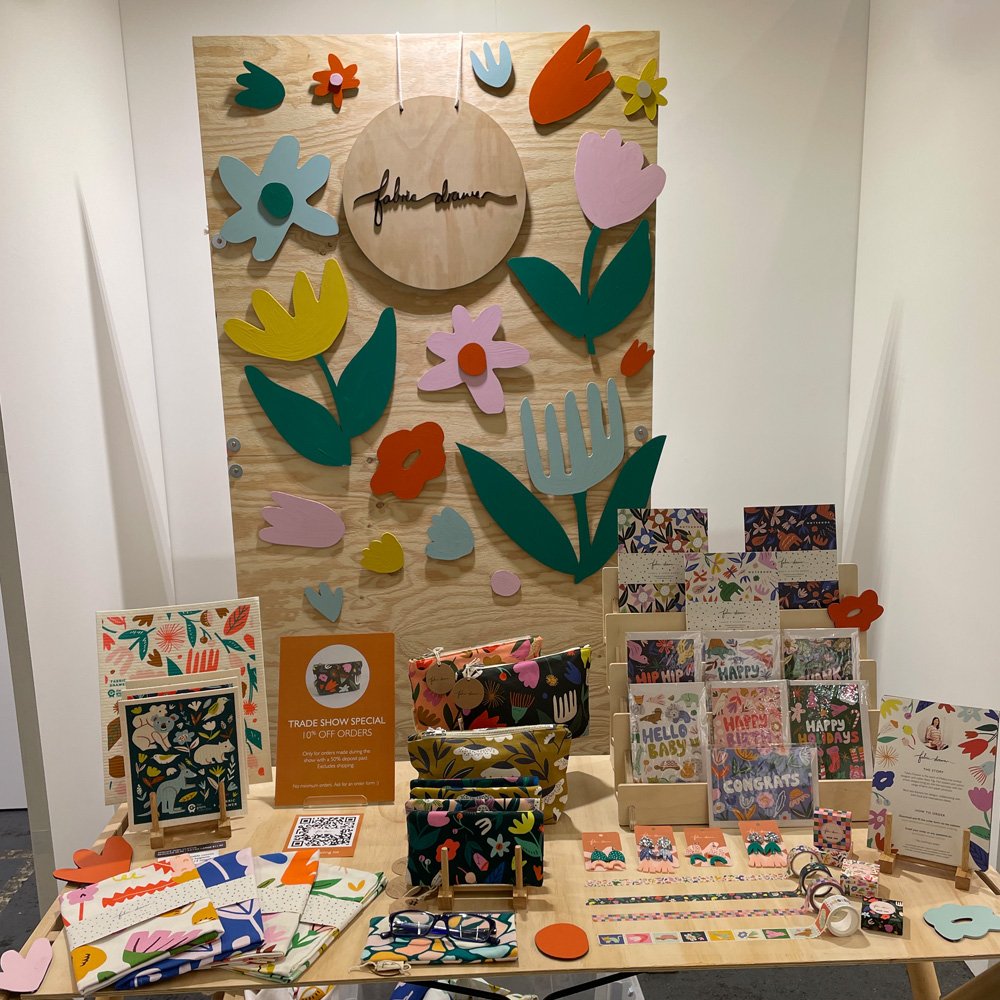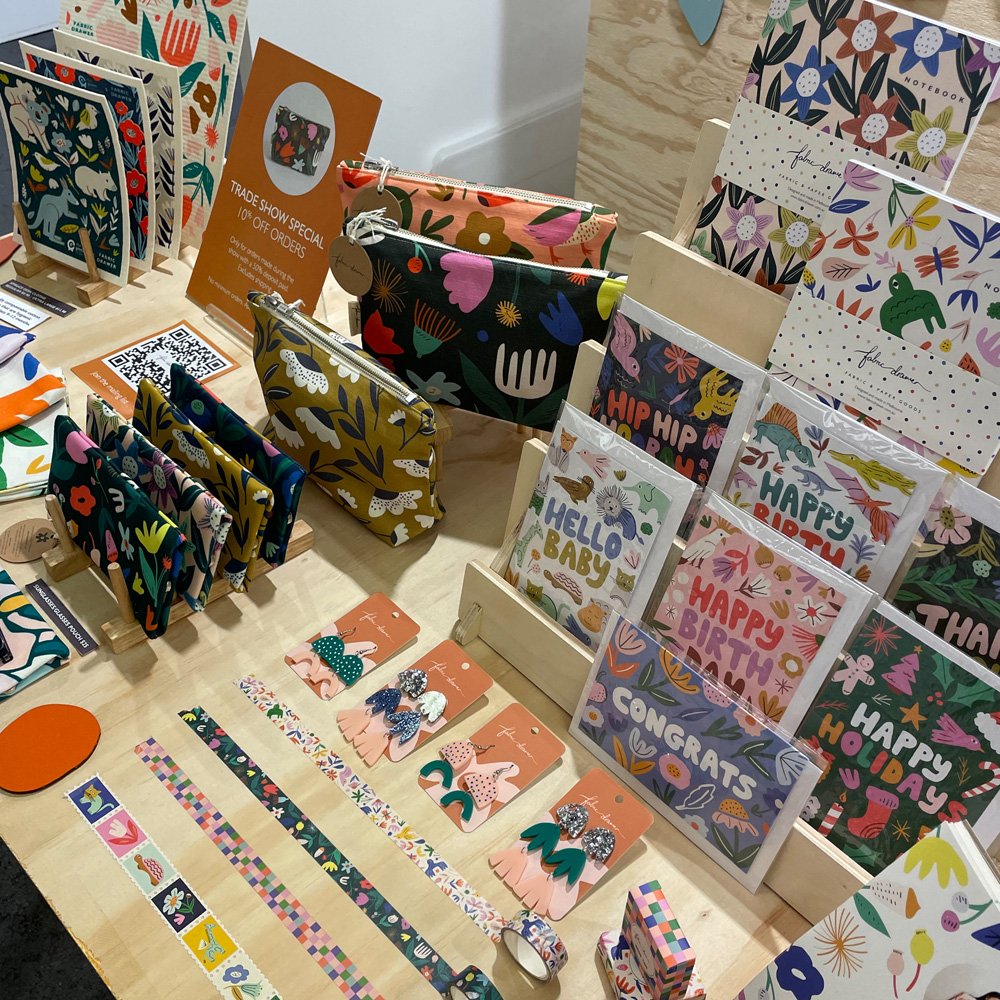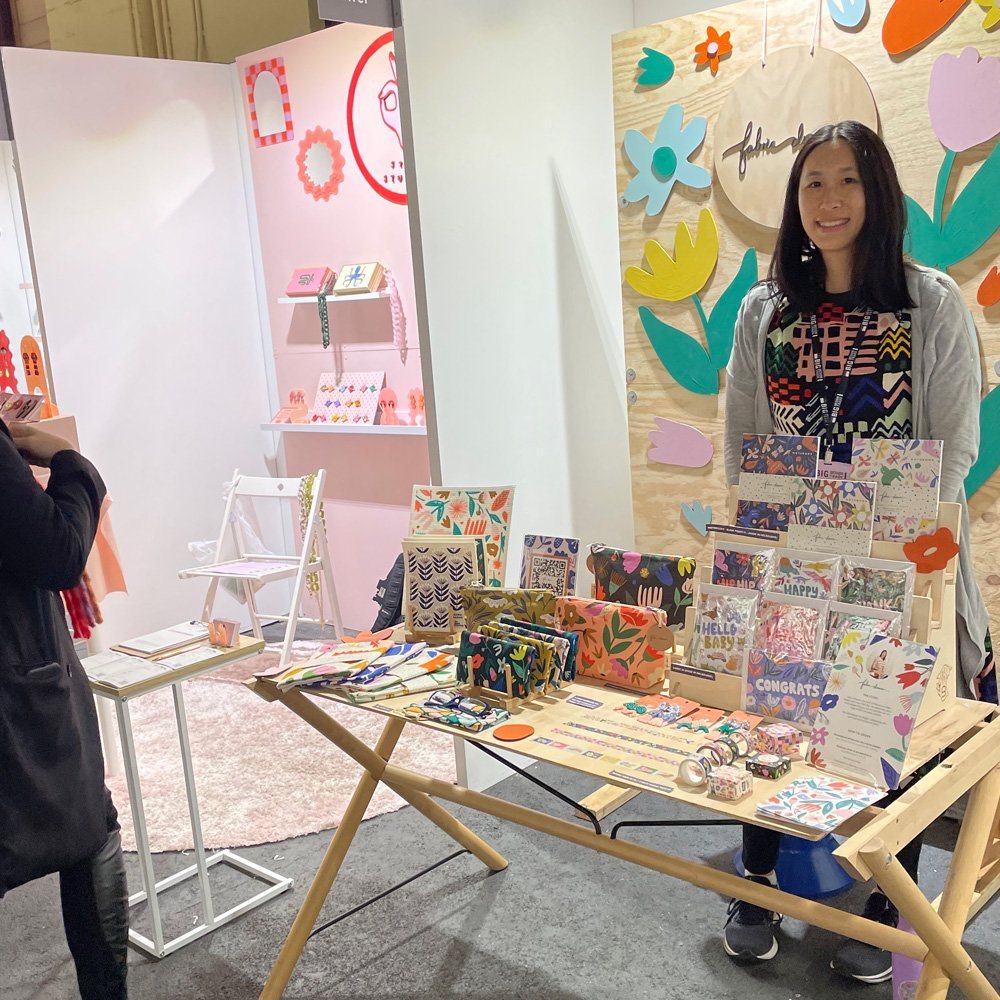Big Design Trade wrap up
It’s been almost 2 months since I did Big Design Trade and I really wanted to share my experience. Doing a trade show had been on my radar for the last 2-3 years, but it wasn’t until last year that I felt confident enough to apply (and then the 2021 show got delayed to this year due to covid).
There’s so much to share (it's a long post), but I’ll dive into the show itself and then my experience post-show. Happy reading!
So what is Big Design Trade?
Big Design Trade is a 3-day trade only event in Melbourne for retail buyers to wholesale your goods. It’s fairly new to the trade fair space, compared to Life InStyle and Reed Gift Fair, which runs around the same time.
Why the Big Design Trade?
Big Design Trade is a smaller trade show and is geared towards finding independent, boutique and unique items. I felt that I would probably find the kind of shops that would appreciate my work, but also as some of my items are handmade, I couldn’t really produce goods on a mass scale. The other reason why it’s a good first time trade show is that the fees are more reasonable. At the time of writing, it costs $2000 for the smallest booth (2m x 2m) for 3 days.
What kind of preparation is involved?
The trade show was only a few weeks after Finders Keepers in July, but as you don’t need to have lots of stock on hand, I didn’t need to do any extra making or ordering of products. I had everything in stock because I had ordered it for Finders Keepers. A sample (or two) of each product in each design is sufficient to have on display at your stand. Buyers that come through aren’t looking to order and take products on the day they visit, so that was a big of a relief after doing a market a few weeks before the event.
There are a few things you need to prepare well before the show and here are my key takeouts:
Your product range
You need to have a think about the products you will wholesale and have that either designed or produced in advance. I wanted to have a Christmas card design and put forward some new products/designs, so I started that process months before. You’ll also need a good selection of photography for the Big Design Trade catalogue.
Your terms and conditions
I kept things simple by not having a minimum order or any other specific terms and conditions, but if you want to set minimum orders etc, communicate that on your printed material/website and in person. It’s also worth knowing your existing stockists locations or having the list on your website, so you don’t take orders from a shop if your products are already in another shop in the same area.
When orders can be fulfilled
The shops are ordering for Christmas, so they didn’t seem to have any issues with allowing 6 weeks for their order to be fulfilled. So be realistic about your time frames and add extra time (next time I would probably say 6-8 weeks) rather than less.
The stand design
I re-used the same flower panel wall I used at Finders Keepers. A few people commented on it so I think it did stand out, but you can use decals, wallpaper, (which are easy to transfer, put up and down) or screw shelves onto the wall for displays. You can do as much or as little as you want - but I always have something I can move and assemble myself. I also bought a second hand table frame and placed a piece of plywood on top to make a table and utilised displays I already had. Overall I tried to keep it fairly low cost because I had invested so much into the stand itself. Also, the stand space wasn’t huge so there wasn’t space for large display set-ups other brands had.
Marketing material
I had postcards that I normally take to markets and I also made a flyer for people to take away. It had a little information about my brand, how to order and some of my products and prices on the back. It’s really important for people to take something away with them as they will be seeing so many exhibitors. Because you’re unlikely to use it after the show so I had less than 100 printed and had a handful left over.
Order form
I wasn’t sure how shops would order, so I created an order form and printed out 10 copies. It has space to write down the shop’s details and then pictures next to the product name with a space to write the quantity. I thought that the shops would fill in the form themselves, but every single order I took I filled out the form. Having a form was much easier than trying to write it into a notebook and it made it so much easier when I complied the orders afterwards.
Website wholesale section
I don’t have an online ordering system set-up for wholesale, so the next best thing was creating a wholesale ordering page with information, photos and a link to download my wholesale order form. The order form is an editable PDF, which is an exact copy of my printed wholesale form, so it can be filled it and easily emailed across. It’s important to have the photos next to the product and also product descriptions so you’ve made it clear as possible what product and which design they are ordering.
During the show
The show itself is not like a bigger market that can be quite busy with constant sales. Big Design Trade offer a shuttle bus service to and from Life InStyle, so I found there were waves of people coming in when the next bus arrived. In between these periods it could get quiet.
Some buyers will have looked at the catalogue prior and know who they want to see, while others are browsing and are happy to just take a flyer. One thing I didn’t start doing until the second day, was trying to jot down people’s details as they came by, to follow up after the show. Sometimes it’s hard to gauge whether people are interested in buying or just there for chat, but it’s important to build a list of potential shops to contact after the show.
Many buyers were interested to know where your products were made, with some only interested in Australian-made products.
There are many buyers coming from interstate and even from New Zealand, so it was a great to meet so many new people. But as an introvert, it was also tiring and after the Friday which was the second day and the busiest, I felt depleted. On the final day (Saturday), I had my energy back, feeling a little more confident talking about my brand and my products - but it ended up being very, very quiet. It was definitely the slowest and felt the longest of the 3 days and I didn’t take any orders.
In those quiet moments, I did get to chat to the other exhibitors which is always something I enjoy doing because I find it can be quite isolating as a solo designer and maker. It’s always interesting to hear other people’s journeys and experiences and how they feel the show is going for them.
How many orders did I take?
I went into the show with no expectations in terms of orders. Of course you want to make back the show costs, plus more, but I really had no idea what would happen. I ended up taking 10 orders of varying amounts. The smallest was around $180 and the largest was over $1000. Overall I was really happy with the number of shops who chosen to order from me. That said, I only took orders and no payments or deposits. A couple of shops I asked about advanced payment or part payment, but they said they usually pay when the goods are ready to ship.
What happened post show?
I spent the next day going through every order and creating a spread sheet of who ordered what. I needed to work out what supplies I needed to order (fabric/zips/cards etc) and how much. As I mentioned earlier, I didn’t take any advance payments, so I was really trusting that the buyers would pay when the order was ready. I don’t really know if there is a better way around it, especially if there are supplies and handmade products made to order.
I made sure I sent a thank you and confirmation of their order on the Monday after the show. It took a full day to go through every order, but it meant I knew what each shop had ordered to work out what supplies I needed. A few shops replied to these emails, but most didn’t respond.
I also contacted the buyers that I had written down their details and followed up straight after the show and from that was able to get a few more wholesale orders.
Fulfilling the orders
I waited a full week before ordering any supplies, to allow for any post-show orders. Outlaying for the supplies was quite a bit, so I think some sort of deposit or partial payment would be ideal, but again I didn't feel many shops would do this (but I didn't push for it either). Once I received all my supplies, the part that took the longest was the making side. I had tried, at the trade show to offer a few different manufactured products and only offer two products (my sunglasses pouches and zip purses) as handmade options. Both the sunglasses and zip pouches were popular for every order, so it meant I had a lot of sewing to do over the next 6 weeks. On reflection, it was a lot of work to be sewing each product at a wholesale price, so in future I need to look into someone else making products for me (but keep it locally made) and/or bump up my prices to make it viable.
At the time of writing this, I have finished and been paid for 10 orders. Even though I had my spreadsheet and order forms and tried to double-check each order before sending, I still managed to send a shop the wrong design for one of my products. Thankfully it was not a handmade item, so I quickly re-sent the correct one, so it goes to show that mistakes can happen!
I would say half of the orders paid soon after I sent them an invoice when the order was ready, but the others I needed to chase up 2-3 times (I waited a week between emails) to get paid. So there is a fair bit of chasing up after the order is ready, which is challenging as it takes a bit of time and worrying you won’t get paid and I am going through the same process with the remaining orders.
Some orders fall through
This was a downside to taking orders at the trade fair and something I hadn't considered.
There was one small order made from the show that I invoiced straight away as I had the items in stock, but after following up twice, I never heard back from them. I decided to leave it because it was a small order and I could use the stock towards other orders if they didn’t get back to me. Unfortunately another order cancelled after initially confirming their order. I followed up 6 weeks later with the order ready for payment, but they couldn't go through with it. I was glad they let me know, so I could use the products for other orders.
And finally, my last and larger order just never got back to me. After also confirming their order post-trade fair, I followed up 6 weeks later and then over the next month a number of times by email/social media, but never received any payment or update. I was a bit disappointed about this one, because it was a larger handmade order and everything was sewn for them. I was also a bit confused as to why an order was placed at the trade show and then to not respond. I felt a little let down as a small maker that they didn't take the time to get back to me, even just a quick email/message to let me know they weren't going ahead. It does make me wary of taking orders from new stockists, especially larger ones without any pre-payment.
Would I do it again?
My word for this year was growth and doing my first trade show was certainly a way to try to grow Fabric Drawer. For me and many other small business makers, this year has been really quiet with online sales, so being able to have wholesale orders to fulfil has kept me busy and meant some funds are coming in. It’s also a way for me to grow my brand outside of Melbourne with interstate shops purchasing some of my products. Time will tell if my products do well if those same shops put in another order.
There are definitely things I need to tweak with my pricing and thinking about whether handmade products are viable. Also asking for a deposit or some payment for new stockists would help cover costs and ensure that if orders fall through I don't lose out. Aside from everything I’ve written here, being at any 3-day event requires a lot of pre-planning with kids. A few exhibitors I spoke with also had kids, so it was nice to share the challenges of trying to make it all work. All in all, I got to experience and learn so much that I can take away moving forward, so definitely no regrets!
If you got to the end of this wrap-up, thank you! I hope it’s been useful reading and you can take away something if you are or thinking about doing a trade show in future.



